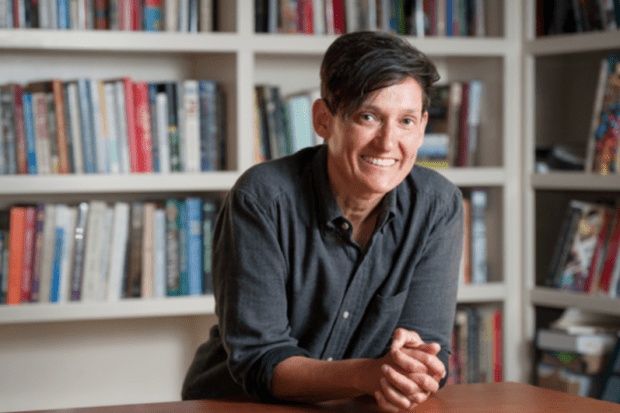About three years ago, “when it became a thing you could do and not be weird”, Lochlann Jain decided to adopt the pronoun “they”.
The decision reflects “an uneasy, even antagonistic relationship to categories” Professor Jain has long experienced as “a mixed-race, gender-fluid person”, which has found expression in anthropological monographs and now in a “graphic menagerie of enchanting curiosity”, published by the University of Toronto Press, called Things That Art.
Today based at both Stanford University’s department of anthropology and King’s College London’s department of global health and social medicine, Professor Jain had an early sense of the restrictions of “growing up a girl in the late Sixties”, refused to wear dresses from the age of 2 and “was really into playing with guns when I was 6, 7 and 8, though my parents wouldn’t get me one”.
Even though Professor Jain “knew I wanted to be an academic as an undergraduate, it took me a long time to find my place. A lot of that was being gender non-normative, being queer, being a person of colour [half-Indian and half-English], not having a position to ask questions that were already legitimate through hundreds of years of asking questions. [The questions that interested me] didn’t fit in a specific discipline.”
Neither philosophy nor economics offered the answer for Professor Jain, but what proved transformational was an interdisciplinary programme on the history of consciousness at the University of California, Santa Cruz “where you could ask questions from a legal perspective, using science and technology studies, social theory or philosophy and bring those together to ask questions that really mattered to us as scholars. There were many people of colour and LGBT, so the programme soaked up all these ‘odd folks’ who couldn’t slot themselves in anywhere else.”
It was also at Santa Cruz, in an era of intense identity politics, that Professor Jain came under “a lot of pressure to join the ‘women of colour’ group. And that was just not how I wanted to spend my time. There was a lot of pressure to take political standpoints…‘If you’re LGBT, you believe this. If you’re a person of colour, you believe that.’ It’s a constant source of frustration for me.”
Along with a strong sense that “the academy is probably one of the most progressive places one could work – one of the things that draws people who are non-normative in all kinds of ways”, Professor Jain expressed amazement by the progress which has been made. “When I first started teaching 20 years ago, if you even said the word ‘queer’, ‘lesbian’ or ‘gay’, you’d have a sea of red faces. Now when I say my pronoun is ‘they’, the students get it right away. When I introduce a guest speaker, they will automatically say their pronouns.”
Yet Professor Jain was also fascinated by the hold that traditional binary categories still have over us: “Why do we so clearly gender our babies and our children? We feel they’d be rootless without gender; we worry what our friends would say. What do we feel would be lost if we let boy babies play with dolls?”
So what does it mean for an academic to try to produce work exploring their “uneasy, even antagonistic relationship to categories”?
One answer lay in academic monographs such as Malignant: How Cancer Becomes Us (2013), which Professor Jain described as “exploding the category of cancer”, and all the stereotypes that have grown up around it. “The myth of the survivor”, for example, meant that patients “have to absorb not only the violence of the treatments and incredibly difficult medical issues but also a kind of ignorance about how they should be behaving”.
Things That Art offers a very different kind of challenge to restrictive categories. It consists of artworks that look a bit like scraps of paper stuck up on a noticeboard. Each explores an offbeat category such as “things that have spots”, “things that are not a hippo”, “things that breathe a tiny bit” and even “things recommended not so long ago for the resuscitation of the drowned” (from bloodletting to blowing smoke into the anus).
So how did Professor Jain hope that these strange and whimsical juxtapositions would make people think again about the simplistic and sometimes dangerous categories we unthinkingly use to divide up the world?
“It would be nice if people just picked it up and weren’t expecting to have their thoughts shaken up,” they replied. “Sometimes a provocation or an open question can lead people to as much or more learning than a straight argument.”
Register to continue
Why register?
- Registration is free and only takes a moment
- Once registered, you can read 3 articles a month
- Sign up for our newsletter
Subscribe
Or subscribe for unlimited access to:
- Unlimited access to news, views, insights & reviews
- Digital editions
- Digital access to THE’s university and college rankings analysis
Already registered or a current subscriber? Login







